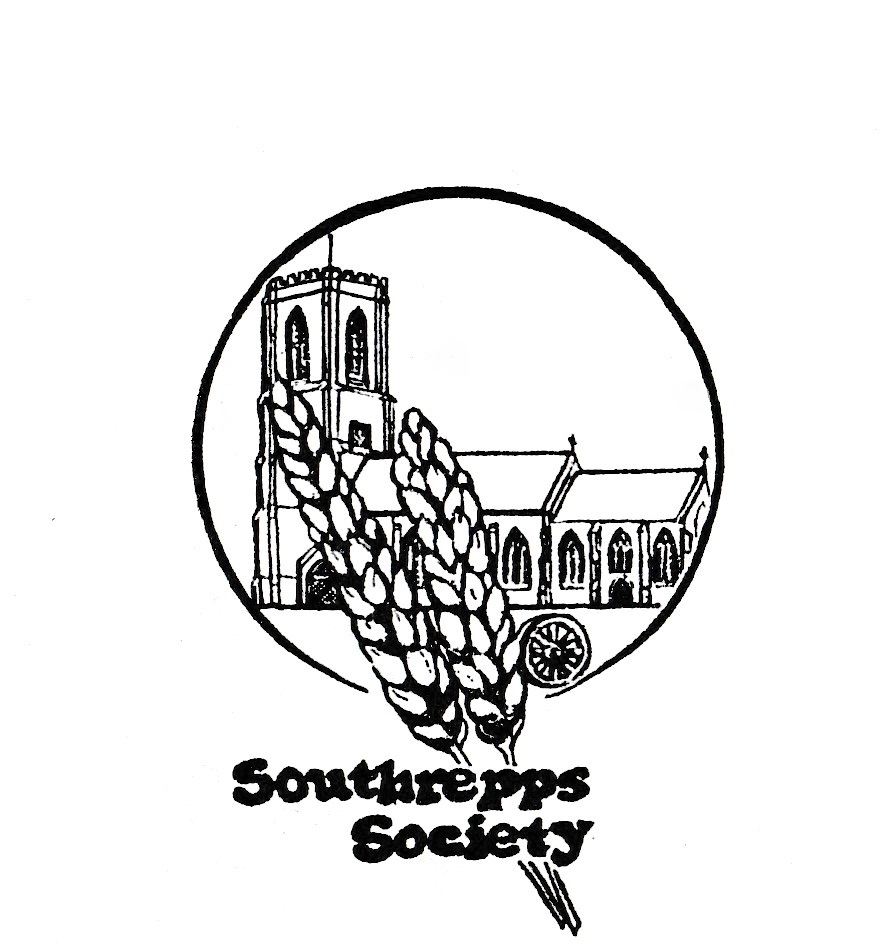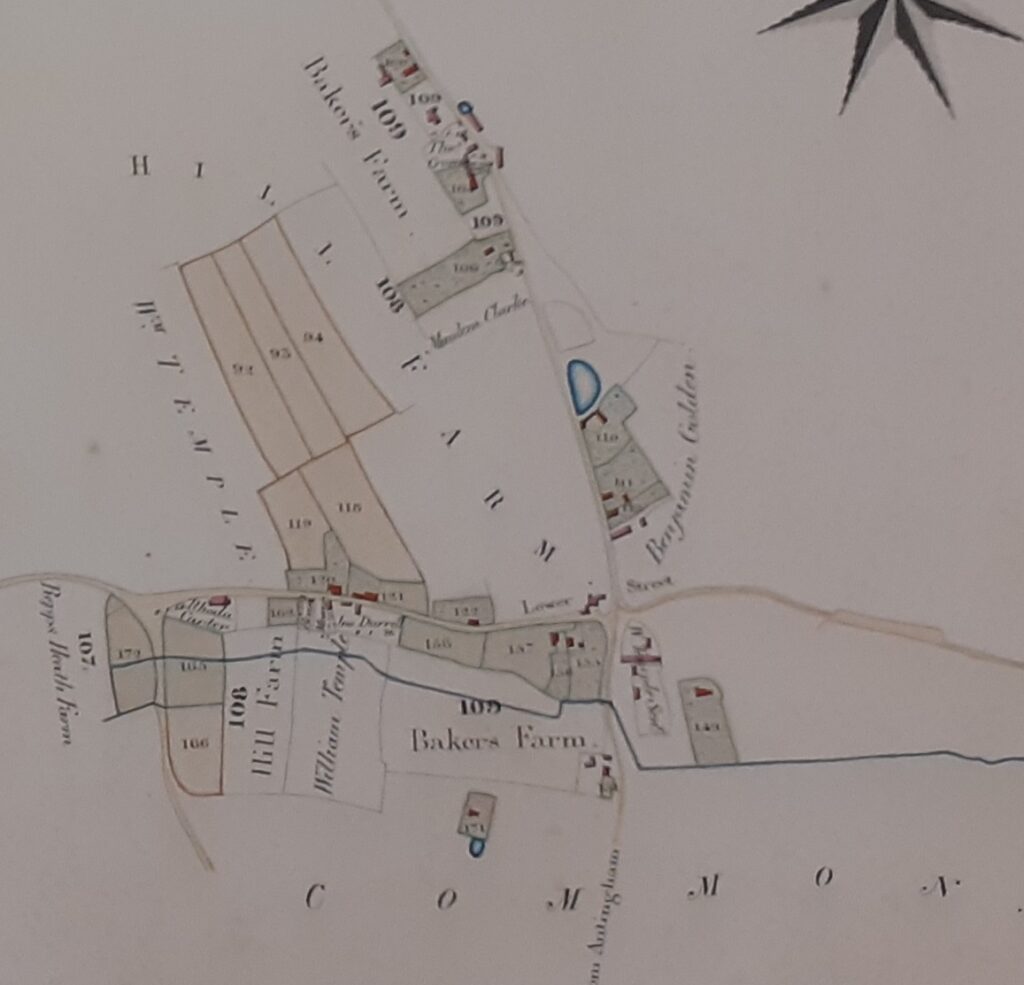
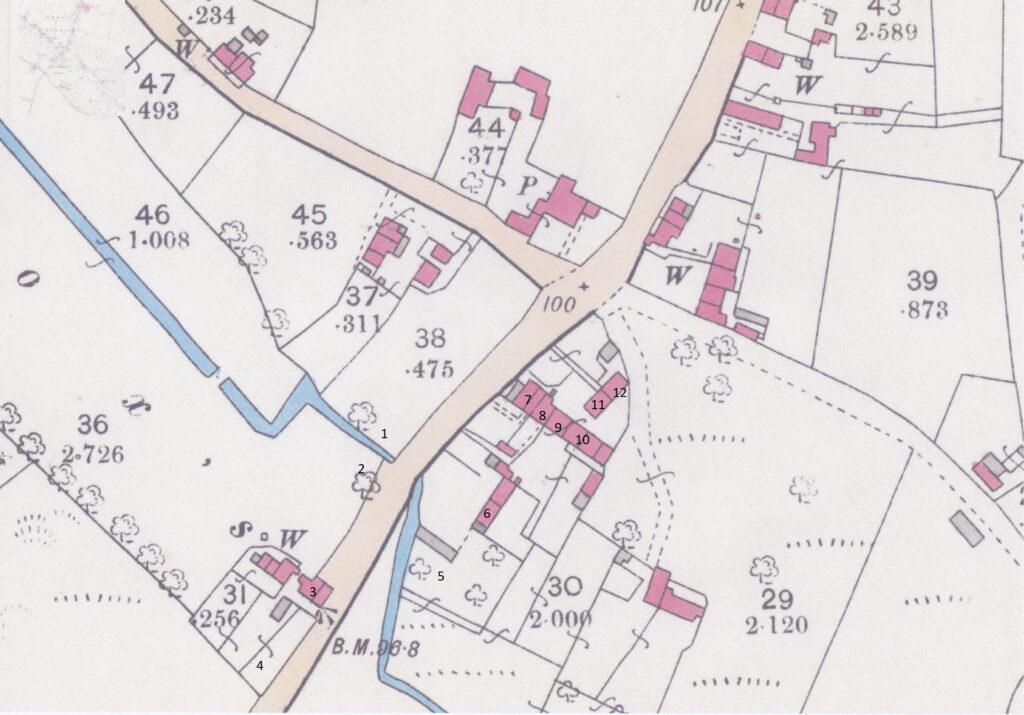
This is the section of road that runs from the Warren Road crossroads to the crossroads with Bradfield Road. It has only been named Lower Street since about 2018. Until then it had no name and the addresses of the houses were just Lower Street or the Common. It has 12 houses on it, dating from 1800s to the 1980s. It crosses Fox’s beck where once steam traction engines would refill their tanks, householders would collect water and children would play. The beck is home to water rail, jack snipe, kingfishers, otters, and water voles.
Table of Contents
- Apple Tree Cottage and Hill Cottage
- Beck Cottages
- Beck House
- Brookside
- Bywater
- Salix
- The Willows
- Welland House
Apple Tree Cottage and Hill Cottage
Numbers 11 and 12 on the map
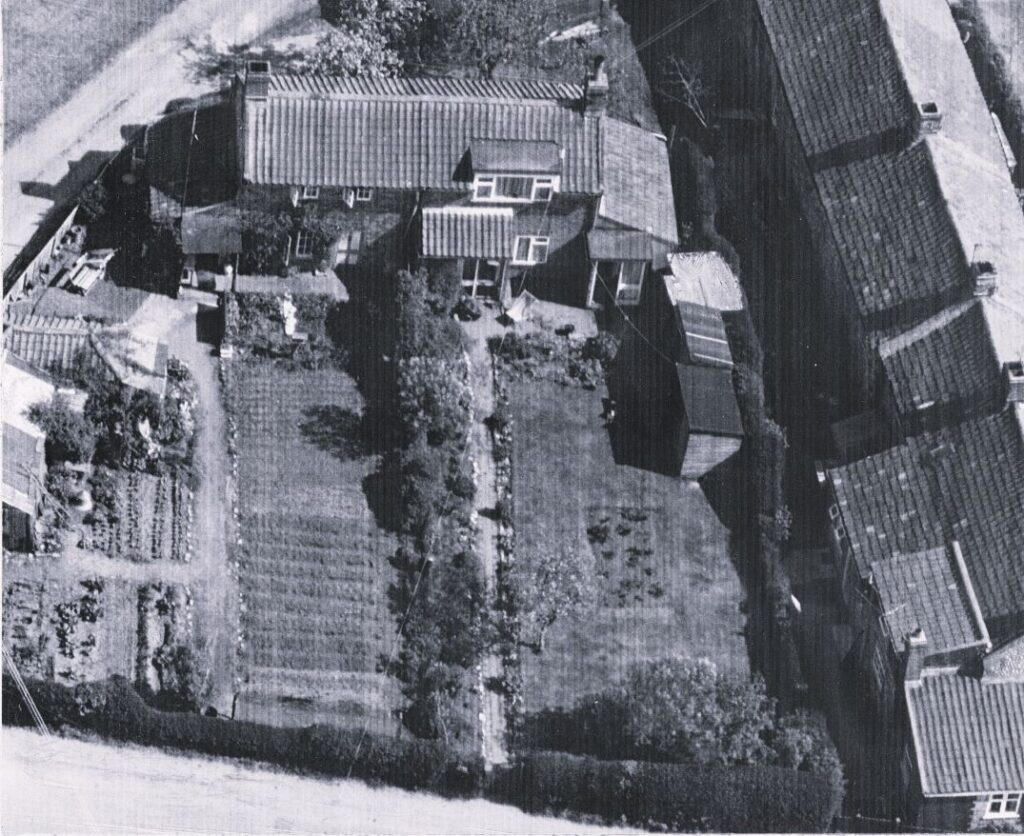
These two cottages are believed to date from about 1780. They appear on the Gunton estate map of 1784. Built of brick to the front and flint to the other three sides they were originally one up one down. They shared a well in the front garden and had outside privies. The deeds also suggest that some of the occupants of Beck Cottages might have had right of access to the garden.

The current owner of Apple Tree Cottage has the deeds and abstracts of title dating back to 1903. These show that the two cottages were owned together as freehold. The owners rented out the properties.
James Storey bought the cottages in 1868 probably from the Gunton Estate with a mortgage form the The Independent Order of Oddfellows Manchester Unity Friendly Society. He then sold them to his two daughters Margaret Bell and Elizabeth Gardiner. By 1903 the sisters sold the cottages to Margaret’s second son William. We know of Margaret as she ran the coffee tavern and reading room. At this time one of the cottages was occupied by Frederick Saunders who lived with his wife Charlotte, sons James 16 and Fred 18. His daughter Harriet Bradfield and her two children Eva 5 and Philip 4. It is very unclear from the documents how long the Saunders rented the property for as they are shown as living in Lower Street for decades. Thomas Knights with his wife and child lived next door. It is impossible to say which family lived in which cottage.
In 1922 the cottages were sold again this time to Arthur Chadwick who we think rented them to Francis Burton and Bertie Gotts. Unfortunately we cannot trace Francis Burton on the census.
In 1926 one Cottage (this in due course will be Apple Tree Cottage) is sold to Robert Gotts of Hanworth not the Bertie Gotts who is living there.
From here we only know who owned or occupied Apple Tree Cottage. An interesting note is that Elizabeth Self bought the cottage in 1933 and is shown as the sole owner even though her husband was still alive and possibly living with her. The cottage changed hands first to Mr Wright in 1948 then to Ethel Staton in 1958. At this point the cottage gets a name Jene-Den, Ethel married Edwin Ridley in 1963 and sold the cottage in 1964.
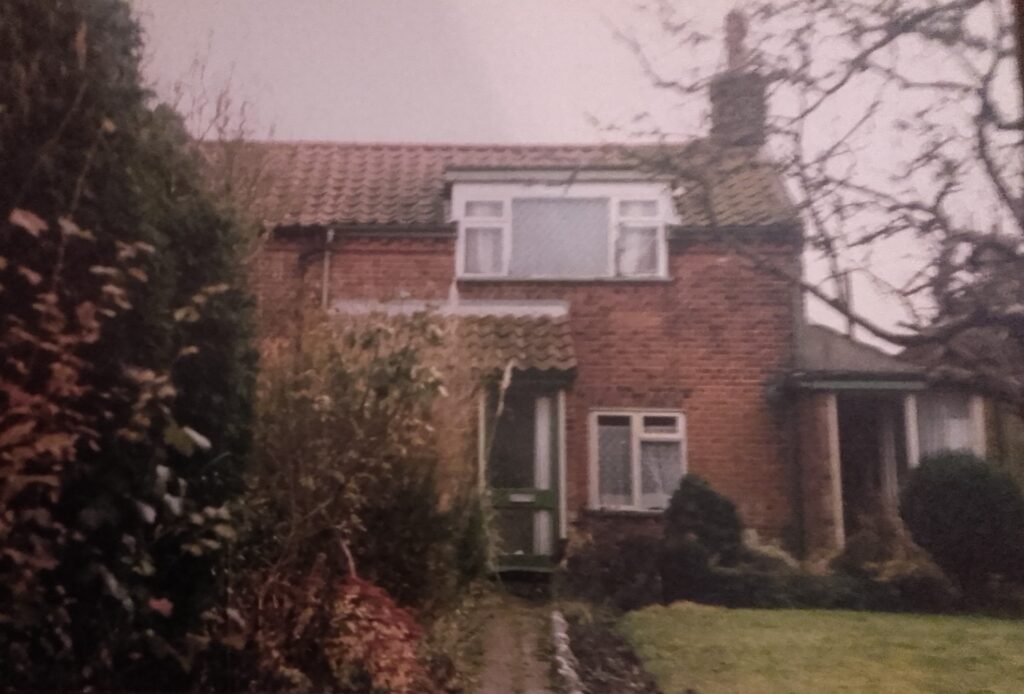
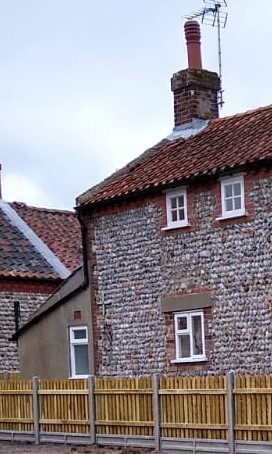
It was during the ownership of the next three couple that substantial changes were made to the cottage. Mrs Surgey who named the cottage Apple Tree. Then Mr and Mrs Jones followed by Mr and Mrs Moore. The windows were changed and a porch added. The back of the cottage remained untouched.
The current owner bought the cottage in 1997. It was in very poor repair with the windows being completely rotten. They chose to return the windows to how they would originally have looked. The kitchen extension was added in the 2020s. The chimney was removed shortly afterwards as it was in danger of collapse.
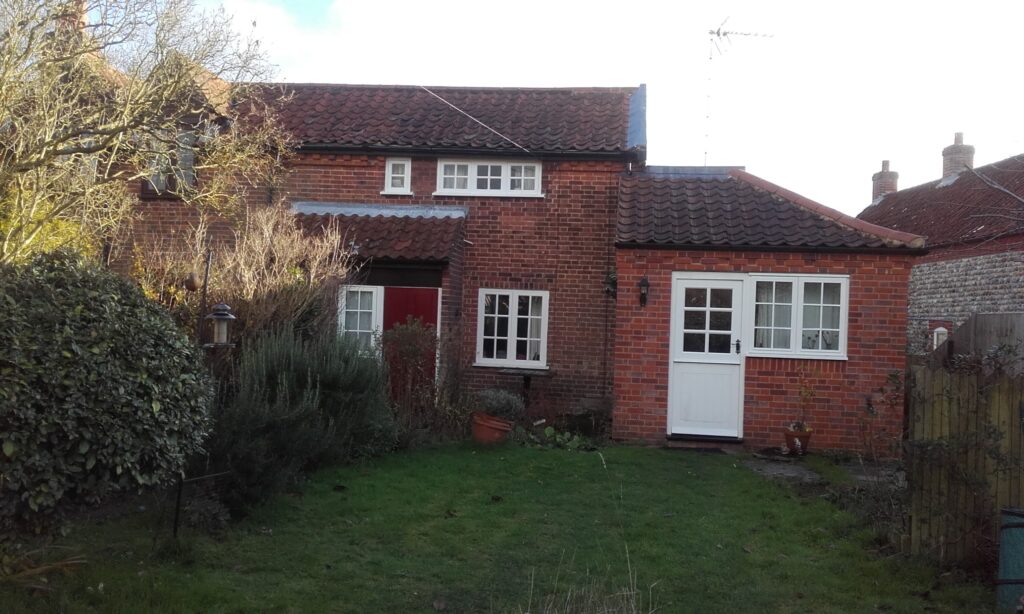
Hill Cottage
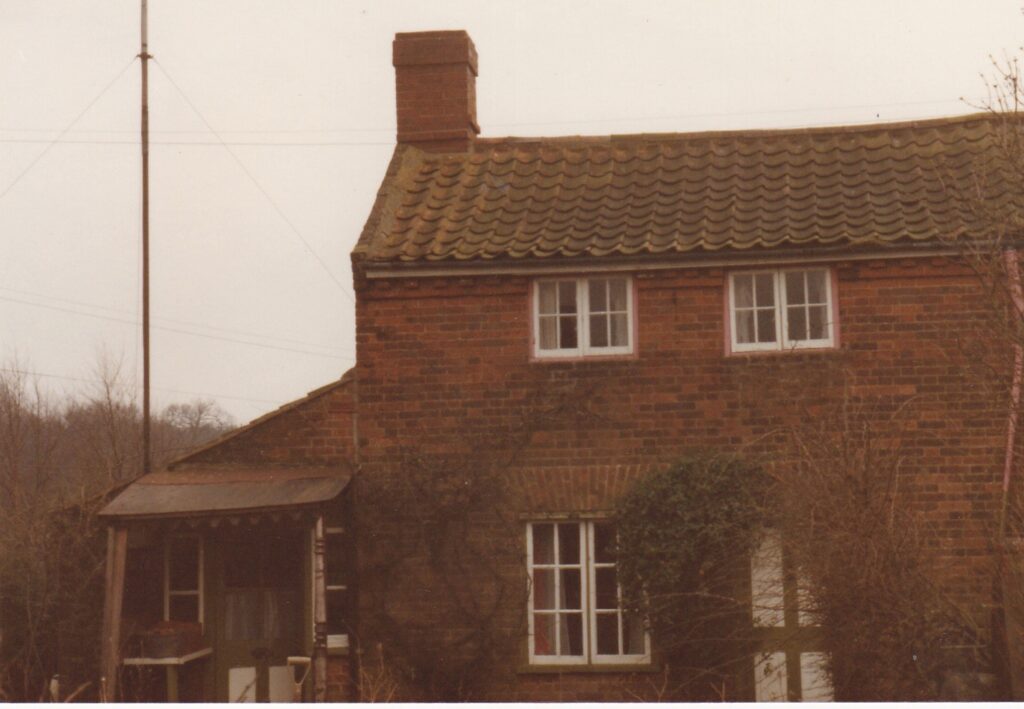
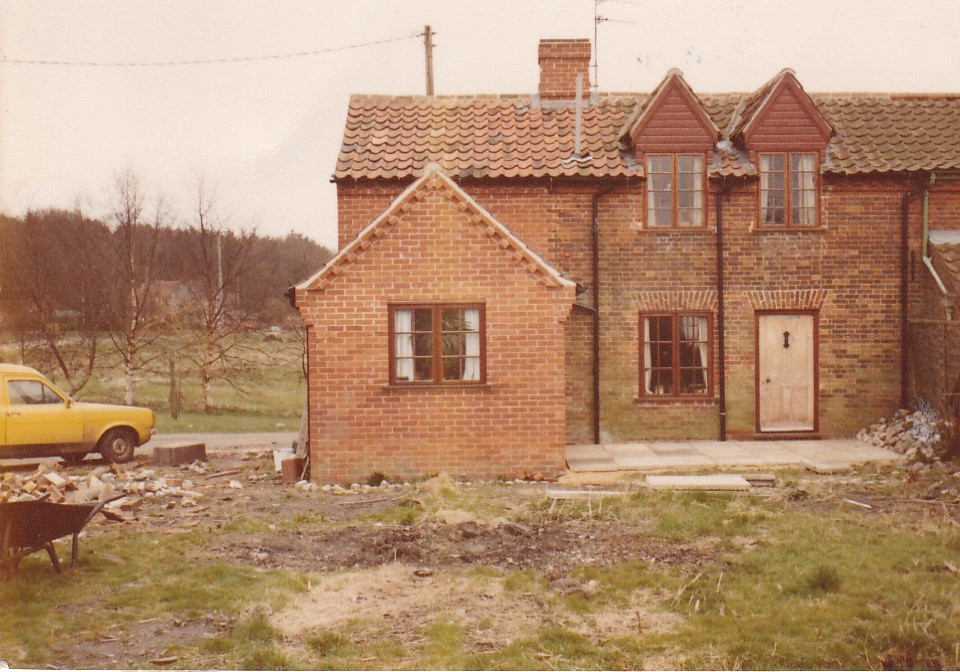
Hill Cottage was substantially altered in the 1980s with a kitchen extension as well as dormer windows.
Beck Cottages
Numbers 7-10 on the map
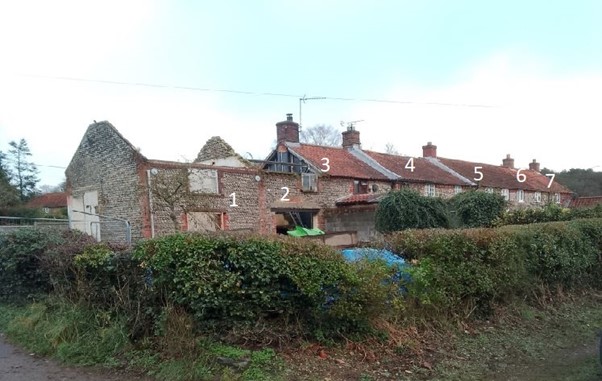
Beck Cottages were not all built at the same time and predate the 1784 estate map. When completed they were numbered as shown 1-7 from the road. They are built of flint with brick corners and window edges and lintels except for number seven which was the last one to be built which was predominately brick. They were mainly one up one down, very small cottages. Number four was slightly larger.
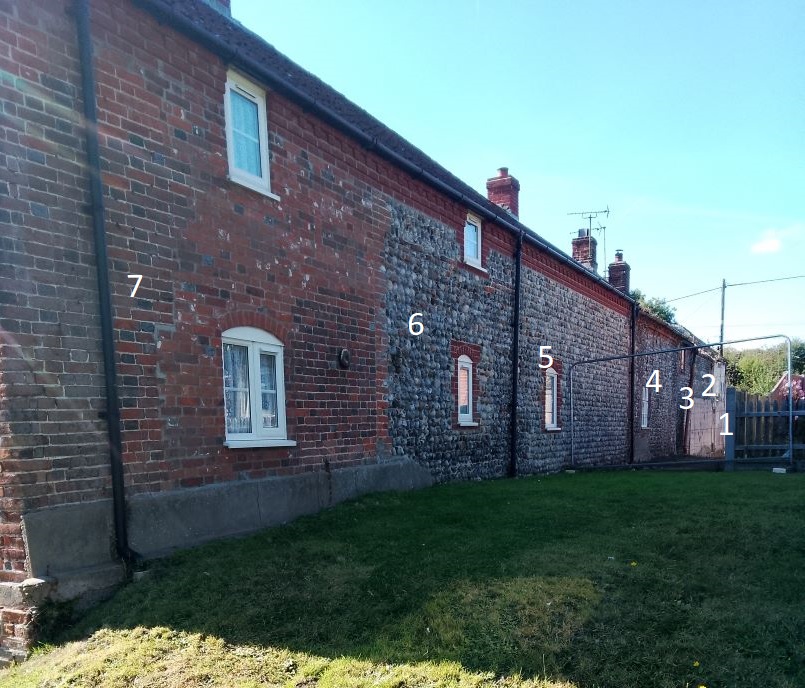
Numbers five and six are believed to be the oldest. When the row was being renovated in the 1990s it was found that number five had 13-inch walls with faced flints on the inside as would be found in a barn. It also had a doorway high up on what would have been an outside wall as found in a hay loft. This was probably a barn attached to the adjoining cottage number six. The next one built moving towards the road was number four. Numbers three and two were built together then number one. The external flint wall is clearly visible in the first photograph. The last one built was the brick and flint one number seven.
The row had outside toilets and shared a well with Beck House. All of the properties were owned by the Gunton estate and the tenants would have been copyhold tenants. As the Gunton estate got into financial difficulties it began to sell off land and property. We don’t know when these were initially sold but by the 1950s Tom Knight of Garden Farm, Pit Street owned the row. Louisa Empson (spinster dressmaker), Hudson, Lord, Plummer, Hetty Woodhouse and Rusty Burton, were possibly tenants at this time, as was Bertie Briggs who rented number five. Bertie then bought numbers five, six and seven. He knocked a doorway through from six to seven and used number five as his garden shed. His son Ralph lived with him until he and his wife Freda bought numbers one and two.
Bertie Briggs died in 1988 and his grandson Cliff Sparrow inherited the cottages. It was not until 1996 that Cliff and Lesley were in a position to be able to renovate the three cottages which had fallen into significant disrepair. They were combined as one dwelling with new roof and windows taking the number 5. Cliff has since built an adjoining outbuilding and separate garage.
Ralph and Freda started to build an extension to number two which by 2003 had been abandoned and the cottage left open to the elements. Ralph died in 2010 and Freda in 2019. Cliff inherited number two and bought number one from Freda’s niece. He is at time of this article rebuilding and extending the two cottages to make one larger dwelling. On the death of Josie Sanders, the last owner of number four, Cliff bought that as well and it is now rented to a local artist.
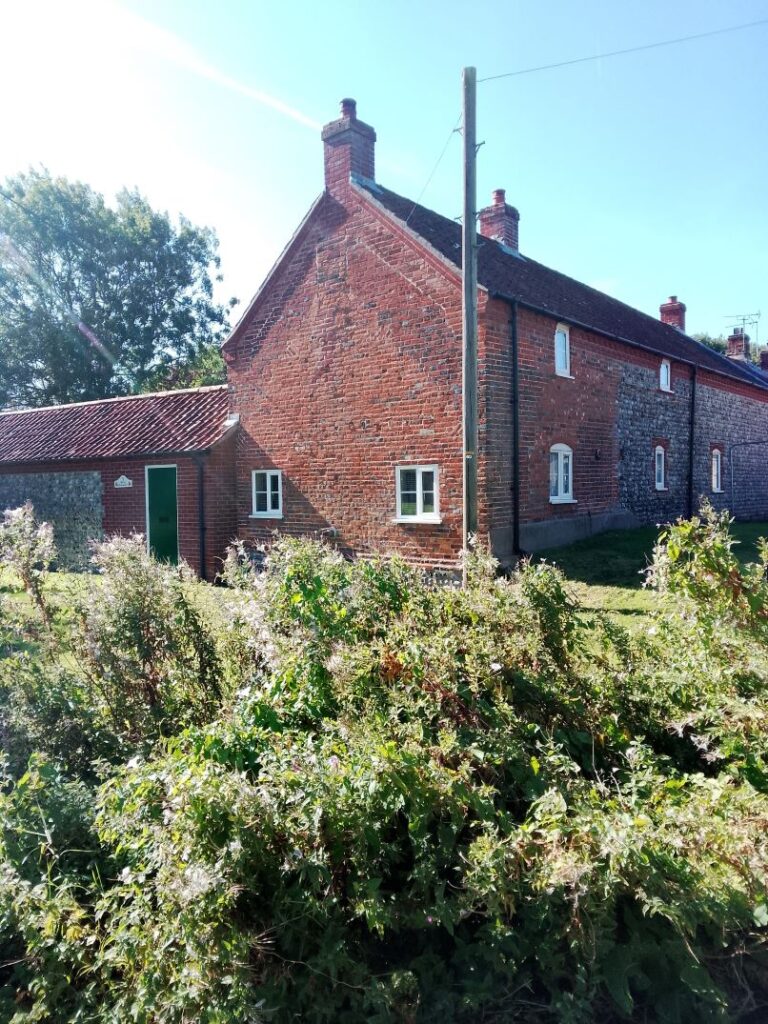
Beck House
Number 6 on the map.
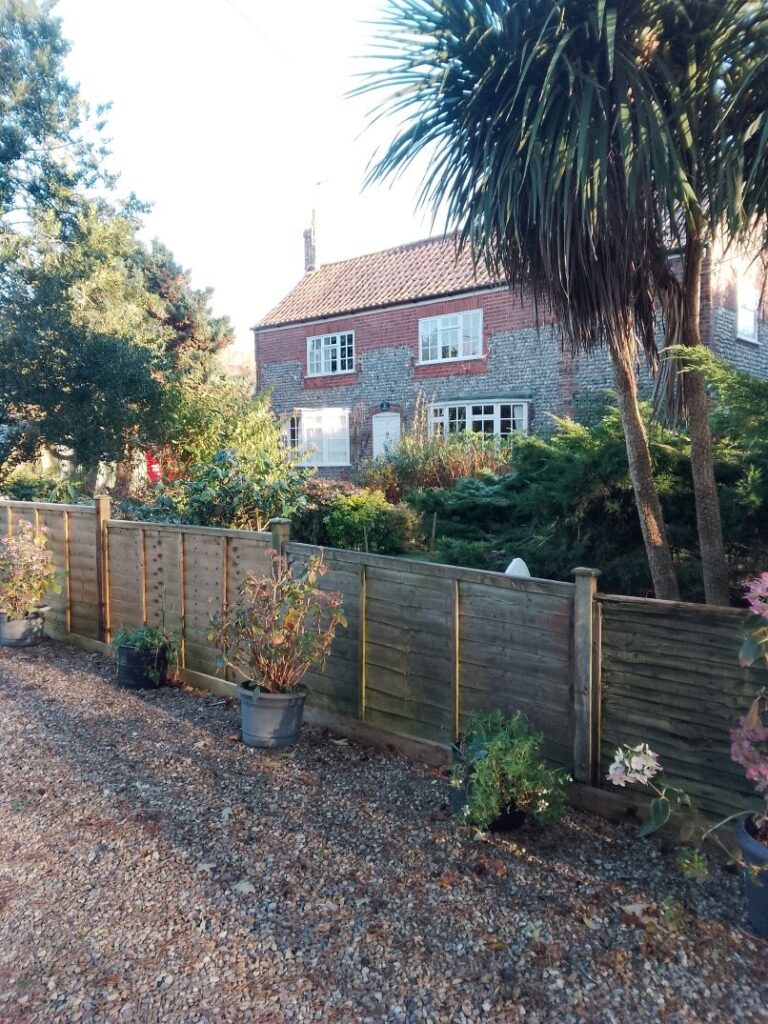
Beck House is shown on the 1784 Henry Biedermann map of Lower Street. It was owned by the Gunton estate. In the Ordnance Survey map of 1884 it is shown as two cottages. It is of flint and brick construction and by the late 1900s its roof had been raised. This is clearly visible in the left hand gable and the added rows of bricks under the roof. The house had, and still has a well in the garden, which supplied water to Beck House and the next-door Beck Cottages.
In 1921 the census shows Arthur Daniels and his wife Ellen living in the house with their young family. Arthur built a wooden outbuilding next to the road in the front garden, for his daughter Marjorie to run as a grocers shop.
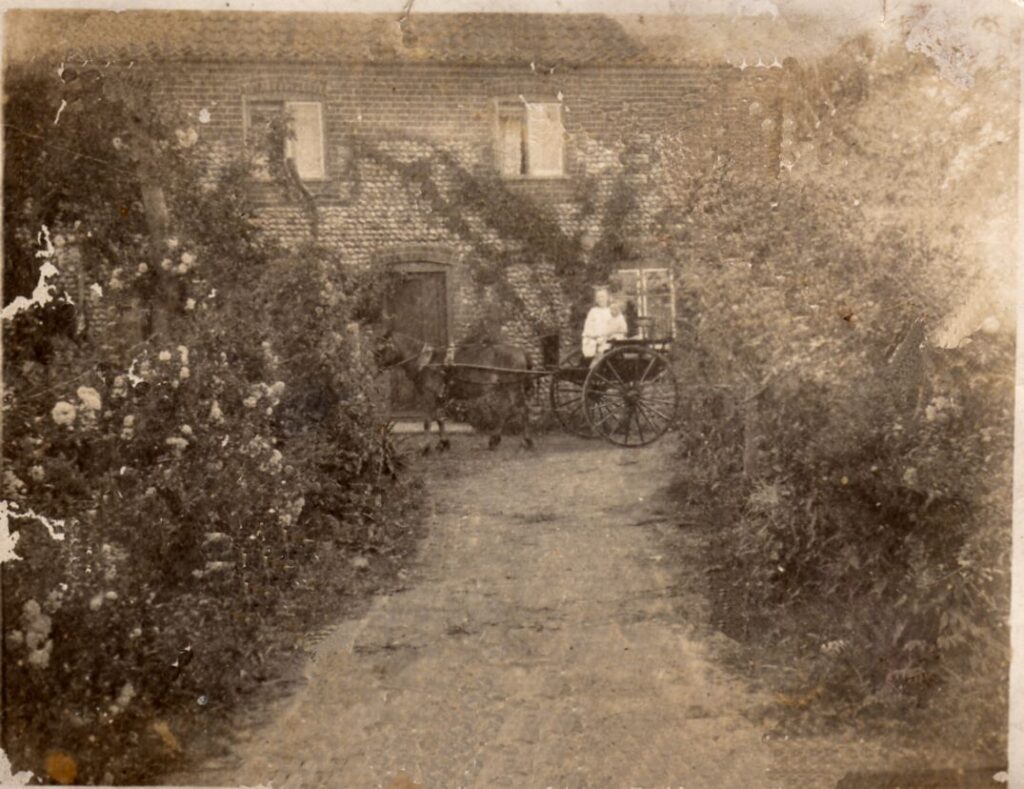
The Daniels moved out in 1929. After they left there were a series of tenants,who also carried on the shop until about 1970.
In 1971 the house was bought by Digger and Betty Shaw. It had a lean-to kitchen, no inside bathroom and only a cold-water tap. Betty’s father who was a builder and decorator Cecil Grey, added an extension to the right-hand end for a new kitchen and bathroom above. The windows were also enlarged and bay windows added to the downstairs rooms.
Brookside
Number 1 on the map
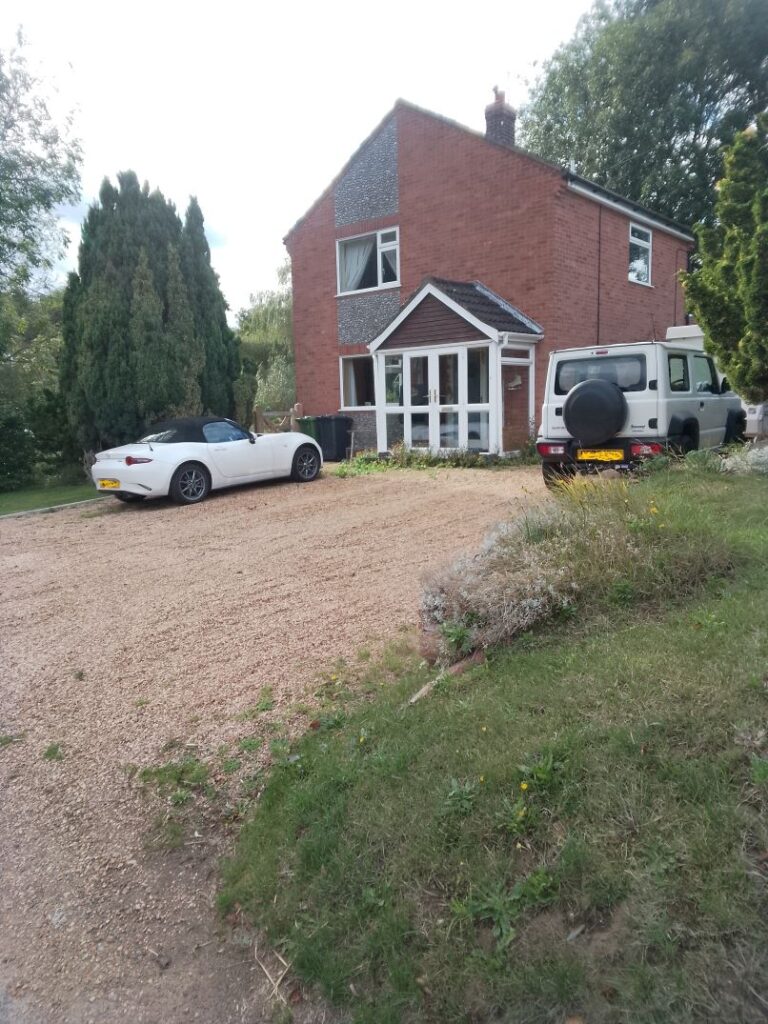
Brookside was built in 1974 by Harry and Joyce Durrant. It was built in the garden of Joyces’ mother, Mrs Hewitt. The architect was asked to design a house that had the same layout as their council house in Long Lane so that all their furniture would fit.
Harry and Joyce lived there until their deaths. Joyce died on Christmas day 2018 and is buried with Harry who died in 2011, in St James’s Churchyard. The house was bought by Miriam and John Grey in 2019. They have extended it to the rear.
Bywater
Number 5 on the map
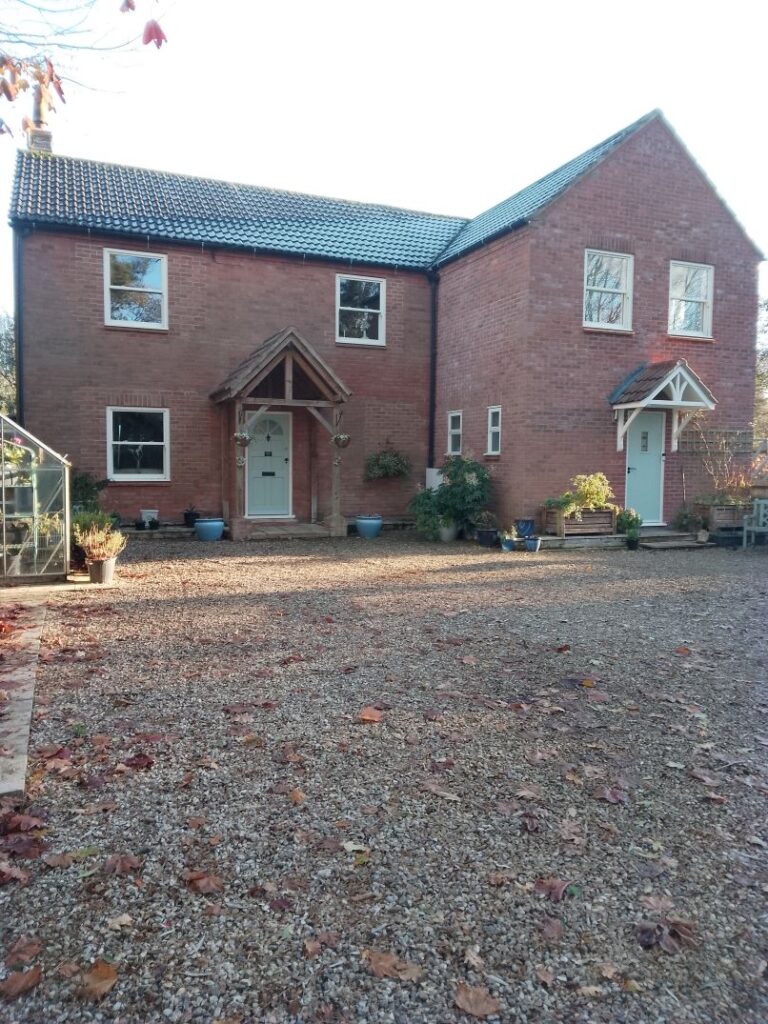
Bywater was built in 1971 on land originally belonging to previous owners of Beck House. It is of brick construction. Foxs’ Beck runs along the front of the property and it looks out across Southrepps Commons. When it was sold in 2008 the owners bought it with the intention of extending and modernising it and then selling it on. This they did, removing the garage and adding a double height extension where the garage had been, turning it from a three to a four bedroomed house. They also changed the windows. It was sold in 2015 to its current owners Janette and Ray Wells.
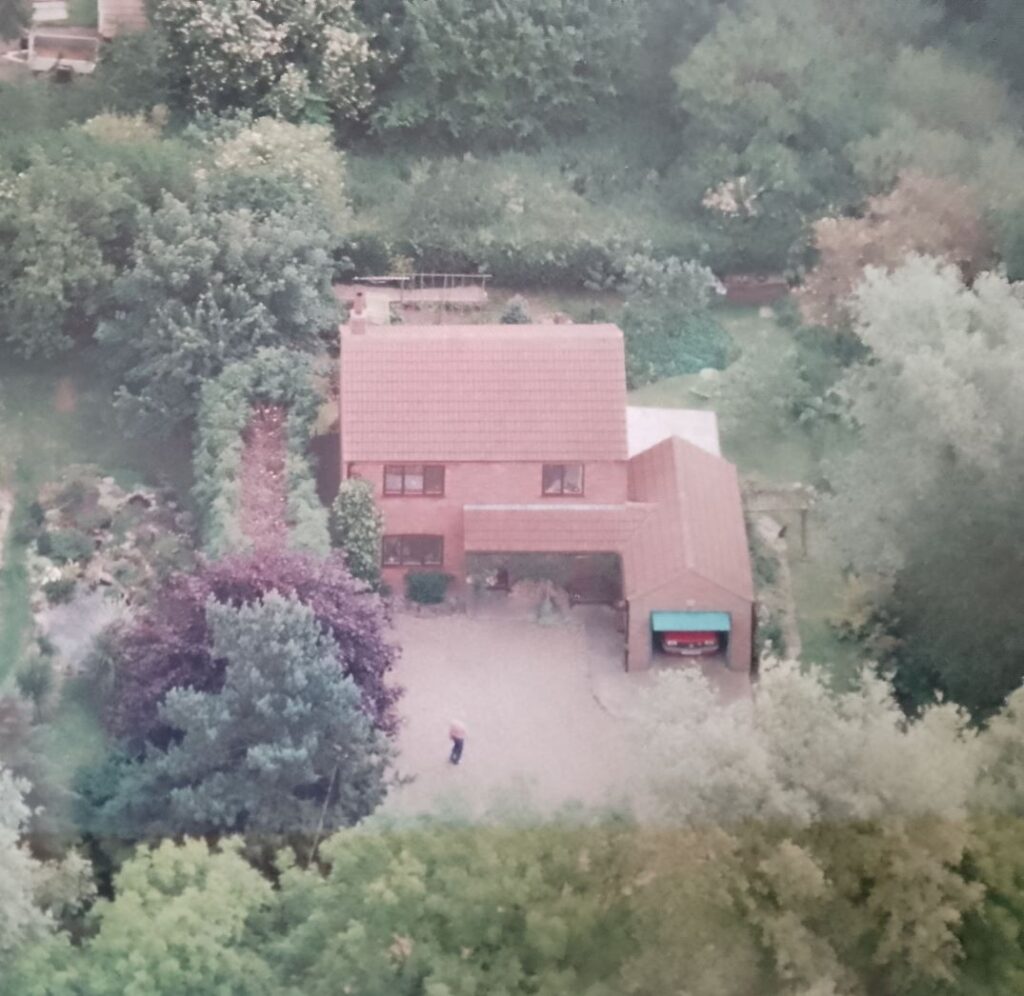
Salix
No 4 on the map.
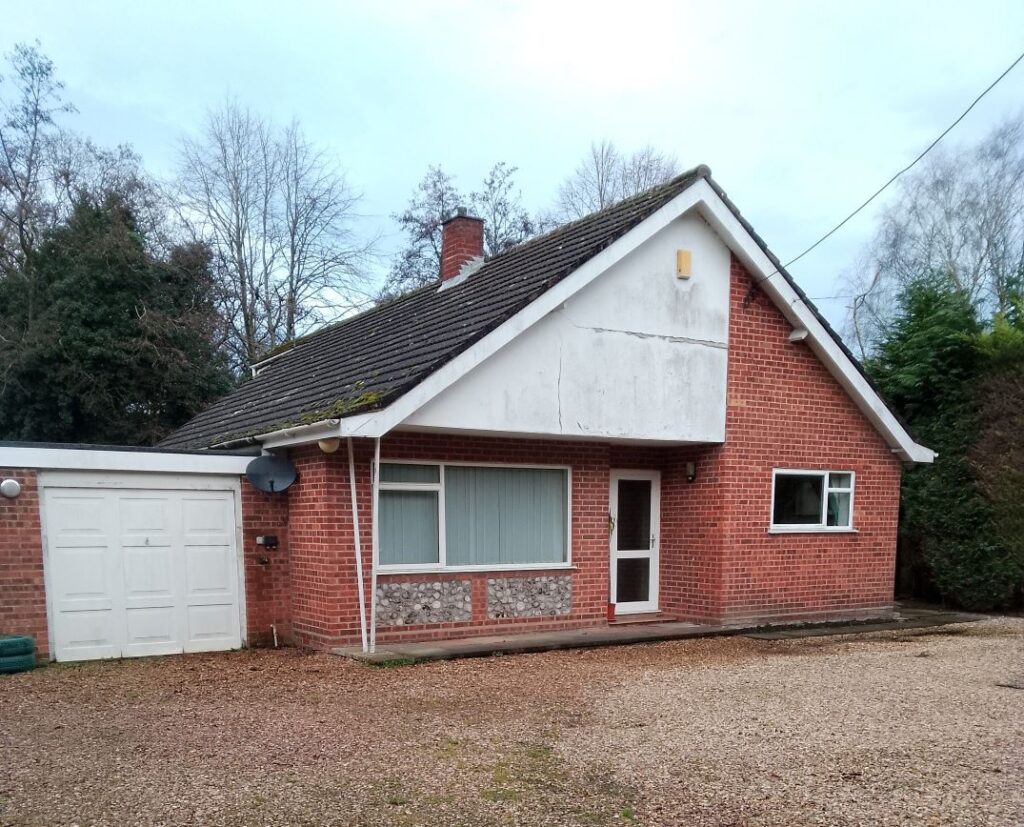
Salix is a three-bedroom bungalow of brick construction with three double garages. It was built (possibly the late 60s) by Lenny Burton-Pye, in the garden of the Willows that he owned at the time. It backs onto the Common. For almost forty years it was owned by Gerry Middleton who ran a car repair business from the premises. He built the third garage in 1988. From here he repaired many residents cars. On his death his widow sold the property. This is it standing empty waiting for its new occupants in 2024.
The Willows
Number 3 on the map
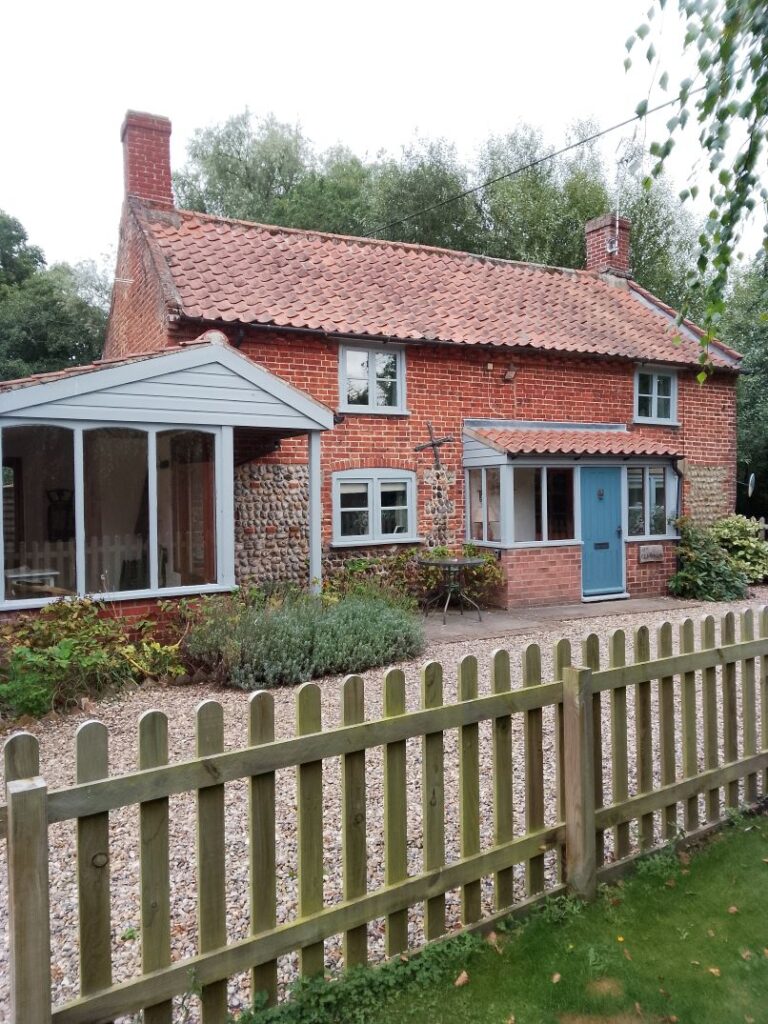
The Willows was originally two workers’ cottages of traditional flint and brick construction, the left hand side being about 20 years older than the right. The late Ruby Risebrow lived in one as a child and told the present owner that it was built in about 1830. We can move that date back to before 1784 as the property is shown on the estate map. They were originally one one down.The cottages were extended to the back,and converted to one dwelling. The next extension added the modern bathroom. A third addition was of the conservatory to the side. The outside toilet in the time of Ruby was where Salix now stands. She also recounted that they got their water from the beck. The cottage is now a holiday let but is often used by the present owner David Sewell who bought it in 2010.
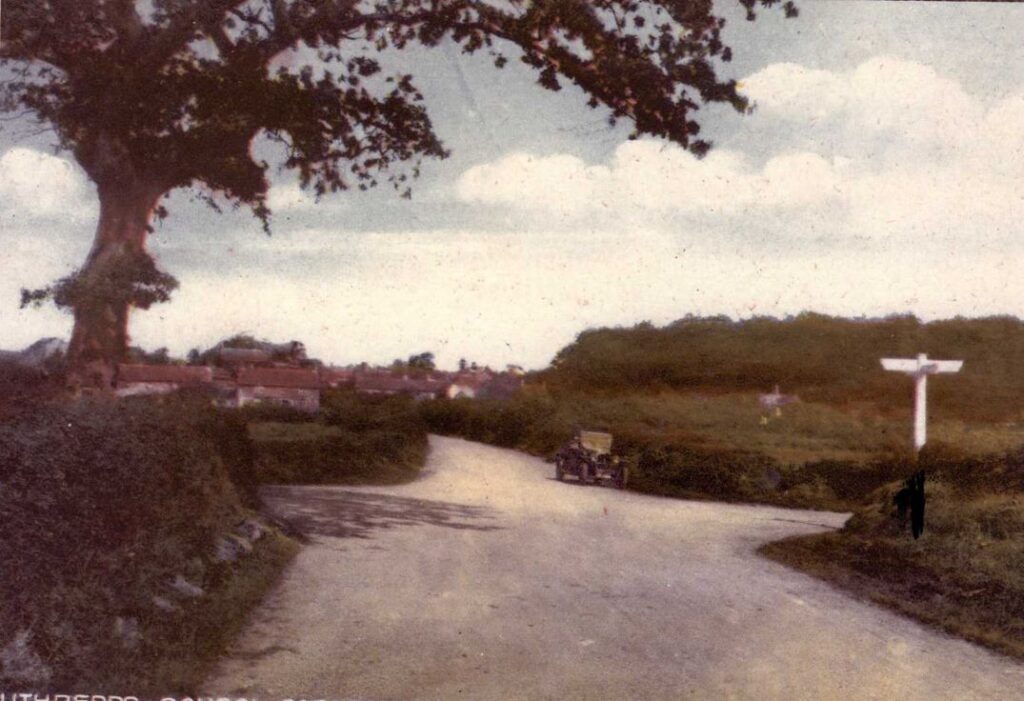
Welland House
Number 2 on the map

1924 Land sold by William James Bell to Frederick William Knights of Garden Farm.
1981 Land sold to Mr and Mrs Dicker as the land was too wet for modern farm machinery.
1982 Flint faced house built by Mr and Mrs Dicker and named Pinkauh.
1991 bought by Robert and Christine Smith who changed the name to Welland House. They extended the house with a double garage with room above.
2001 Bought by Robert and Carol Bone.
2003 Bought by the present owners John and Margaret Dowland who have further extended the sitting room in 2013 and replaced the dilapidated stables with a cart shed. The house stands in 3 and ¾ acres and has Fox’s Beck running through it.
